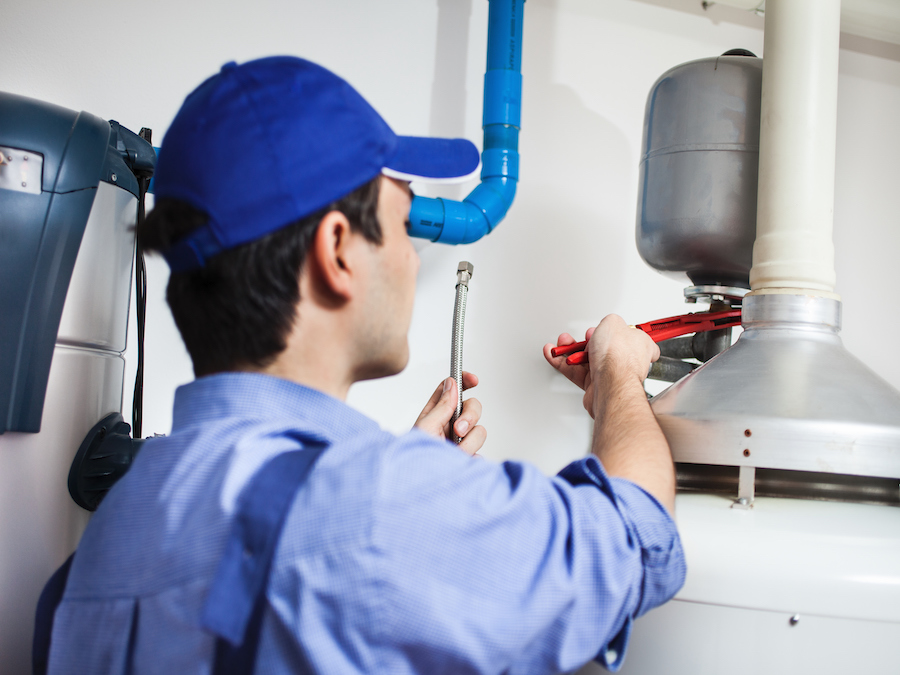
Did you know that water heater maintenance should take place annually? On average, a water heater can last between eight to twelve years, but only with the proper upkeep. If you’re performing routine servicing, there are some things you can do yourself. Before you begin:
- Turn off the power for electric heaters and shut off the circuit breaker for the water heater in your home’s breaker box.
- If you have a gas heater, turn off the gas supply and turn on the pilot knob (on the water heater’s gas valve/thermostat) to the OFF position.
After doing so, follow these three water heater maintenance tips.
Flush out Your Water Heater
Removing residue from the bottom of the tank prevents rust and corrosion. It also improves energy efficiency. A complete flush of the unit is best. However, this requires shutting down the heater entirely. A mini-flush is efficient, takes less time, and you can perform this while the heater is running.
- Put a bucket under the drain valve found by the bottom of the water heater.
- Rotate the valve counterclockwise to release one to two gallons of water into the bucket. Some drain valves will have a handle, while others will have a short stem with a slot designated for a screwdriver.
- Close the valve by turning it clockwise.
Be careful not to burn yourself because the water will be scalding. Also, if the valve won’t turn, call us for a repair.
Examine the Temperature and Pressure (T&P) Valve
The T&P relief valve is a vital safety feature of your water heater. It detects dangerous pressure buildup or an excessively high temperature inside the water heater tank, automatically opening to relieve the pressure. Without a functioning T&P valve, a water heater could explode. You can locate this valve at the top of the water heater tank or side wall. Additionally, it has a discharge tube that extends down to the tank’s base. How to test the valve:
- Put a bucket under the discharge tube adjoined to the T&P valve.
- Lift the valve’s lever to open it manually and release hot water through the discharge tube and into the bucket, avoiding skin contact.
- Allow the water to flow for a few seconds, letting go of the lever and allowing it to return to its place, shutting off the water.
If the valve doesn’t open and release water or if it leaks after the test, you need a valve replacement.
Turn Down the Temperature
For most households, the U.S. Department of Energy recommends that a water heater’s temperature be at 120 degrees Fahrenheit. You can reduce energy costs by more than five percent at this temperature. Additionally, lower temperatures reduce the risk of scalding and slow down mineral deposit buildup.
Turn the temperature down on a gas water heater by turning the temperature dial to 120 degrees Fahrenheit. For an electric water heater, there might be a chance that you need to remove a small metal panel covering the thermostat:
- Turn off the water heater power by switching off the appropriate breaker in your home’s breaker box.
- Remove the access panel and adjust the temperature to the desired setting, with you potentially needing a flathead screwdriver.
- Replace the thermostat cover and turn the breaker box power on again.
If your electric heater has an upper and lower thermostat, adjust the lower and upper thermostat to be at the same temperature.
For more water heater maintenance tips, keep reading our blogs, and contact us if you need a water heater installation or repair.
All of Your Plumbing Needs from Master Plumbing
Give Master Plumbing a call at (301) 650-9100 or contact us online to get more information on how our expert plumbers can help you with your dripping faucet (or just about anything else plumbing related!). We have received Angie’s List Super Service Award recognition for plumbing and drain cleaning every year since 2007, in addition to the Best Plumber award from Best of Bethesda. We are fully licensed, bonded, and insured and our service is unparalleled. Give us a call today—you won’t regret it! To see examples of our projects, follow us on Facebook, Twitter, and Pinterest.
